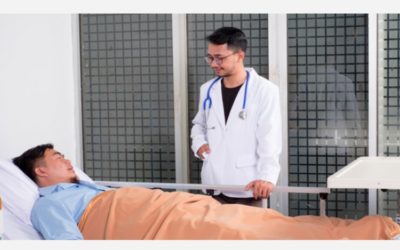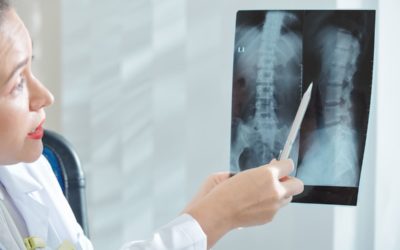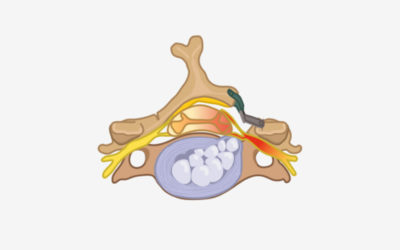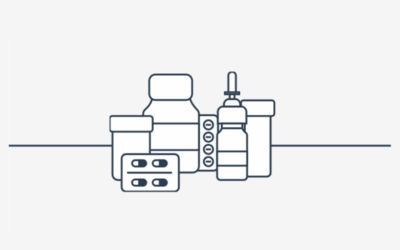Leading Experts in Minimally Invasive Spine Surgery in California
Get An AppointmentMost people who are considering surgery would prefer a minimally invasive procedure but very few actually understand what this means. Minimally invasive spine surgery does not refer to a specific procedure. Rather, it is more properly described as a philosophy. In order to understand this approach, it’s important to understand the traditional method of spine surgery and compare it with this newer more effective method.
Older Traditional Spine Surgery…
Increased Recovery Time
Large Incisions (5 in+)
Higher Infection Risk
Longer Hospital Stay
When approaching surgery, the traditional technique was to make a large incision with wide exposure to allow for complete visualization of the anatomy. This way surgeons could be comfortable that they were operating in the right area and doing the right procedure. Unfortunately, this required large incisions extensive dissection and subsequently damage that issues. This increases recovery time increases the risk of infection increases surgical time ultimately this leads to increased length of stay in the hospital and increased risks of peri-operative complications.
Newer Minimally Invasive Surgery Today…
Quicker at-Home Recovery
Smaller Incision
Faster Surgery
Minimal Damage
As we have gained a better understanding of surgical anatomy and with greater availability of resources such as image guidance and improve surgical instruments such as arthroscopes and specialized retractors we have been able to greatly reduce the size of surgical incisions. ultimately the goal is to accomplish the same procedure with minimizing collateral damage. In this way a lumbar Fusion that traditionally would have been done with the 5 or 6 inch scission in a surgery that lasted 3 to 4 hours and may have had blood loss that was significant enough to require a transfusion, can now be done through 2 small incisions less than an inch in length with tissue spreading techniques that minimize muscle damage.
Minimally Invasive surgery can accomplish the same decompression and stabilization of the spine. In a skilled physician’s hands, the surgery will take less time than the old method of open procedure. Additional equipment and significant training and experience are required which is why true minimally invasive spine surgery continues to only be done by a few surgeons.
Recent Blogs on Minimally Invasive Treatments
What Happens on Day 1 After the Procedure
Depending on the type of surgery, some patients go home the same day while others may go home in two to four days. The days between surgery and discharge may be filled with instructions, exercises and rest. Here is an example of a typical day after surgery in the...
Treatment of Osteoporosis of the Spine
While lost bone cannot be replaced and osteoporosis cannot be cured completely, there are ways to slow down its progression, maintain healthy bone density and prevent symptoms. Creating Your Plan Creating a treatment plan for osteoporosis often involves a team of...
Types of Spinal Fractures
Fractures can occur anywhere along the spine. Five to ten percent occur in the cervical (neck) region. 64% occur in the thoracolumbar (thorax/lower back) region, often at T12-L1. Spinal fractures and dislocations can pinch, compress, and even tear the spinal cord....
Causes and Symptoms of Spinal Fractures
Spinal fractures are caused by trauma or conditions that weaken the bones. Fractures can result from low or high energy trauma: • A low energy fracture means it is the result of weakened bones, often due to osteoporosis, spine tumors or certain types of cancers....
Sleeping Techniques for Mid or Lower Back Surgery
The best sleeping position to reduce your back pain after surgery is either on your back with your knees bent and a pillow under your knees or on your side with your knees bent and a pillow between your legs. If side sleeping provides the most benefit, then make sure...
Surgical Treatment for Spinal Stenosis
If other non-surgical treatments haven’t reduced your symptoms, your doctor could recommend surgical treatment. Surgery can relieve pressure on your spinal cord and stabilize parts of your spinal segment that may be causing pain. Depending on the condition, location,...
Non-Surgical Treatment for Spinal Stenosis
Stenosis is the abnormal narrowing of a passage in your body, therefore spinal stenosis is the narrowing of your spinal canal (central stenosis) or nerve root canal (lateral stenosis). Because your spinal canal houses the spinal cord, this narrowing affects your...
What to Expect After Mid or Lower Back Surgery
Recovery from surgery takes time and each person recovers at a different pace. After spine surgery, you can expect your back to feel stiff and sore. You will also likely feel tired and fatigued for several weeks. You may have trouble sitting or standing in one...
What to Expect Before Your Spinal Procedure
Once you have decided to have spine surgery, there are a number of preparations that follow. Pre-Operative Evaluation During the physical exam before surgery you might expect a blood test, electrocardiogram (EKG), and chest X-ray. Your doctor will also discuss...
After Cervical Disc Replacement Surgery
After a cervical disc replacement procedure, do everything you can to allow your body to heal in the best way possible. Keep the following checklist in mind. Pain Medication Tylenol may be recommended for pain. Non-Steroidal Anti-Inflammatory drugs such as Ibuprofen...
Follow Us
Request An Appointment
Address: 3273 Claremont Way, Ste. 201, Napa, CA 94558
Phone: 707-603-1042










